Oh, what a year it was. 2024 took saw a number of predictable stories top our coverage on Headlight.News, but the year also saw some surprising twists and turns — like the planned merger between Honda and Nissan – that no one likely would, or could, have predicted 12 months ago. There was some good news for consumers, and some bad. Some automakers made out like bandits, while others are now struggling with an uncertain future. Here are the 2024 stories that our editorial team found most compelling.
Paul A. Eisenstein:
Strange bedfellows
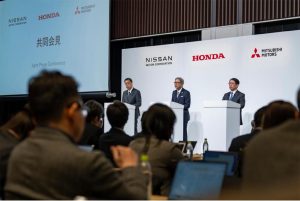
Nissan CEO Makato Uchida, left, with Honda CEO Toshihiro Mibe and Mitsubishi CEO Takao Kato in Tokyo on December 23.
As you’ll see, reading on, the planned Honda-Nissan merger is one of the top stories for the entire Headlight.News team. But while it’s certainly a big story, it’s not the only one involving strange bedfellows. We’ve seen a variety of new deals pairing up manufacturers around the world. In some cases, they’re simply linking up to help fill gaps in their line-up. In other instances, they’re looking to boost economies of scale or share costs – something that has become particularly critical for an industry expected to invest over $1 trillion worldwide on electrified vehicles through the rest of this decade.
Few deals are as broad in nature as the one envisioned by Honda and Nissan. Most are narrowly focused, such as the eight-automaker partnership that has created the new Ionna charging network. And while we’ve seen a number of new alliances, we’ve also seen some partnerships fall apart. Honda and General Motors, for example, seem to be backing off on some of their joint ventures – in 2024 scrubbing plans to develop new, low-cost EVs – but still moving forward on others, such as fuel-cell development.
Stellantis stumbles
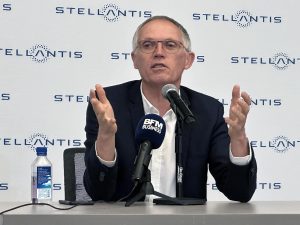
CEO Carlos Tavares acknowledged his own “arrogance” may have delayed the response to declining sales and earnings.
Not all that long ago, Carlos Tavares was the name most anyone following the auto industry would put atop the list of best automotive executives. As the year drew to a close, however, he unexpectedly tendered his resignation, leaving Stellantis rudderless as it launched an effort to come up with a new CEO.
The Portugese-born Tavares appeared to have the magic touch when he first joined France’s Group PSA in 2014, helping reverse years of financial problems. His reputation grew when the automaker acquired Opel/Vauxhall from General Motors, quickly turning the money-losing European brand into a profit center. Tavares then engineered the merger with Fiat Chrysler Automobiles, creating the world’s fourth-largest carmaker. But, after some initial success, the bottom fell out in 2024. Tavares admitted his own “arrogance” contributed to the problem, especially with U.S. brands Ram and Jeep. With the Stellantis board unconvinced by his turnaround plan, the executive resigned “with immediate effect. The Euro-American company expects to name a replacement during the first half of this year.
China on the offense
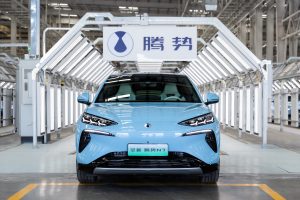
A BYD Denza N7, coming off the assembly line above, is one of the reasons a Honda-Nissan linkup make sense..
Ever since General Motors opened up a Buick plant in Shanghai a quarter century ago, China has been seen as the golden goose by foreign manufacturers. Just a few years ago, GM was racking up its biggest sales numbers and earnings in what has become the world’s largest automotive market. Suddenly, however, it’s losing money – a lot of it – in China. And it’s not alone. A number of global manufacturers, such as VW and Ford, are struggling there, some even planning to pull out of the market.
A major part of the problem is the rise of Chinese domestic brands, notably BYD and Geely, who have been rolling out highly competitive product lines, and offering them at substantial discounts compared to foreign-owned competitors. Further complicating matters, those Chinese brands are going global, exports quintupling this decade, to more than 5 million in 2024. They’re making major gains in places like Europe and Latin America – though Pres. Joe Biden effectively barred entry to the U.S. by quadrupling tariffs on Chinese-made EVs. Now, some brands are looking to set up overseas production, BYD rumored to be considering sites in the U.S.
Michael Strong:
Going, going, Ghosn?
It’s hard to say how much of Nissan’s troubles were touched off by the ouster — and arrest — of Carlos Ghosn six years ago. But things haven’t gone well since then. And Nissan Motor Co.’s struggles came to a head in 2024. The automaker’s problems worsened during the first half of fiscal year 2024, as sales tumbled and earnings went deep into the red. The results forced the automaker to make dramatic moves to shore up losses, including slashing 9,000 jobs worldwide and cutting production by 20%.
Nissan moved to cut costs by $2.6 billion in the wake of massive losses driven by slow sales in China and the U.S. but there was growing speculation there was no way to reverse the downward spiral. Just as it looked like the company could tip into bankruptcy, Honda came to the rescue. The two sides forged a partnership, though despite being the second-largest Japanese automaker, Nissan had to accept the idea that the smaller Honda will be taking the lead, naming the top executives in a soon-to-be-formed holding company. The merger should be complete by 2026.
On again, off again Apple car may just be off
Apple spent more than $1 billion and 10 years swishing back and forth between building an electric vehicle or not. Project Titan clearly lacked commitment — the company didn’t formally acknowledge its existence until a few years ago — and now it appears a final decision’s been made: it’s done.
The 2,000 or so people working on the project were told in late February by Chief Operating Officer Jeff Williams and Kevin Lynch, the vice president overseeing the effort also known as T172, that it was being scrubbed for good. Exactly why Apple decided to pull the plug on Titan is unclear. But some insiders have suggested that the company realized it would be difficult to deliver the level of technology it wanted for less than a six-figure price tag.
Cyber threats remain real
Fears about hackers seemed limited to having them take over cars while they were being driven and using them as weapons. However, the potential dangers became all the more apparent with the mid-June attack on CDK. It’s amajor data provider that runs the software used by the majority of American car dealers for everything from negotiating sales to scheduling service. The attack ground vehicle sales to a halt, reminding the industry it has multiple cyber weak spots.
The attack by an Eastern European hacking group cost dealers more than $1 billion, and cut into new vehicle sales for a couple of months. It’s lead to a major push across the auto industry to shore up cybersecurity.
Carl Malek:
Jaguar’s controversial reboot
Taking the top spot on my list is Jaguar’s ambitious reboot into an all-electric automaker. The company was once known for focusing on its heritage in design and the potent performance that lurked under the hood of models like the Jaguar F-type and the Jaguar F-Pace. However, weak sales made the British automaker realize that change was needed in order to survive. But the company has gone about this in an unexpected manner. Instead of a typical reboot, Jaguar chose to embark on a controversial marketing campaign featuring abstract colors, even stranger-looking fashion models, and snarky replies to internet trolls on social media.
The odd teaser campaign eventually culminated in the Type 00 concept which previews a future GT model which will spearhead Jag’s EV future. It remains to be seen if Jaguar will ultimately succeed in its ambitious plans but dealerships will have to be patient since the company will not offer any new Jag models for them to sell another one year.
Honda and Nissan’s plan to merge
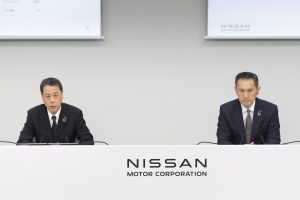
Nissan executives are taking pay cuts as the company moves to lock down a proposed merger with Honda.
One of the biggest surprises of 2024 was the recent confirmation by Honda and Nissan that the two firms are planning to merge together. (Make that four if you include Nissan’s alliance partners, Mitsubishi and Renault. Neither the small Japanese manufacturer or the French carmaker have determined whether they will sign on, as well.)
Both Nissan and Honda were behind the curve when it came to developing EVs but in the case of Nissan, the planned merger will be a welcome lifeline for the company. the latter firm is currently struggling with sliding sales, bloated inventory, and internal turmoil created not only by a collapse in its partnership with Renault, but also the lingering fallout from the scandal that dethroned former CEO and current Interpol fugitive Carlos Ghosn and caused Nissan to be placed under the legal microscope.
GM envisions new life for aging Ren Cen

A proposed plan would take down two towers of the RenCen, the remaining facility anchoring a 27-acre “waterfront destination.”
With GM moving out of the Renaissance Center, questions emerged about what would be done with the giant behemoth of a building which has become an integral part of Detroit’s urban skyline. While some suggested that the entire complex should be torn down, GM attempted to offer the best of both worlds with its vision of what the building could be. While two of the towers would be demolished, the remaining three towers would be transformed into a “waterfront destination” which would revitalize the riverfront.
It remains to be seen if this plan will be formally implemented but as moving day approaches for GM, the question of the RenCen’s ultimate fate is a key talking points among city leaders and residents.
Joe Szczesny:
UAW cracks the South with organizing victory at VW

UAW Pres. Sean Fain led a rally outside the VW plant in Chattanooga ahead of the historic vote that saw it win representation rights.
The United Auto Workers Union’s successful campaign to organize workers at the Volkswagen of America plant in Chattanooga, Tennessee was one of the big stories of 2024. It reset labor policies across the industry as non-union automakers scrambled to offer employees raises across the board as part of the effort to keep the union at bay.
The push, led by UAW Pres. Shawn Fain, is its biggest organizing drive in decades. But it stumbled when workers at Mercedes-Benz plant in Vance, Alabama voted against the union. (The German automaker took a number of steps, event replacing the plant manager during its effort to beat back the union challenge.) The UAW hasn’t said what foreign-owned plants will be targeted next, but it did gain a large foothold in the new battery plants operated by General Motors where they succeeded in gaining a hefty contract.
GM steps back from autonomous vehicles
After trying to become a dominant player in autonomous technology, General Motors announced it was suspending its investment in Cruise, the robotaxi business it acquired in 2016. GM executives had promised Cruise would be leading what was described as the inevitable shift to autonomous vehicles, which would invariably reduce the enormous suffering and costs created by traffic accidents. (And it also hoped to generate billions in new revenue from an anticipated surge in demand for robotaxis.)
The technical challenges associated with AVs, however, are proving more intractable. GM said Cruise would be absorbed by GM and combined with the automaker’s more prosaic work of engineering driver assistance features. GM was silent about the unrealized capital gains it might have realized with a Cruise spinoff, which Wall Street recommended two years earlier. GM isn’t the only company to pull back on robotaxis, Uber abandoning its efforts several years ago. But Google spinoff Waymo remains committed and operates in a number of U.S. markets. Meanwhile, Tesla CEO Elon Musk announced plans to have the new CyberCab in production by 2026 – though the automaker has seldom met production deadlines.
Volkswagen cuts move forward
Germany’s largest automaker has moved ahead with plans to eliminate as many as 35,000 jobs as it re-positioned the company for the intense competition driven by the growing importance of electric vehicles and this swift rise of new Chinese automakers, which have become the world’s largest exporters of cars and trucks and as well as leaders in batteries and battery electric vehicles. VW did succeed in winning key concessions from one of the European Union’s most powerful labor unions, IG Metall. But VW had to agree not to close any factories in Germany, and its path forward into a more difficult future.
The sweeping plan comes months after VW’s chief financial officer warned it could face a major catastrophe in “one or two years” if it didn’t cut costs and bring production in line with demand. Germany is the epicenter of these cuts, reflecting high production costs and long-standing productivity issues the automaker blames on its powerful German union. In the end, IG Metall agreed to these cuts but fought off others, including wage cuts for German hourly employees. Separately, VW is struggling to come up with a contract for its newly unionized plant in Chattanooga, Tennessee that, it fears, could drive up manufacturing costs in the States.

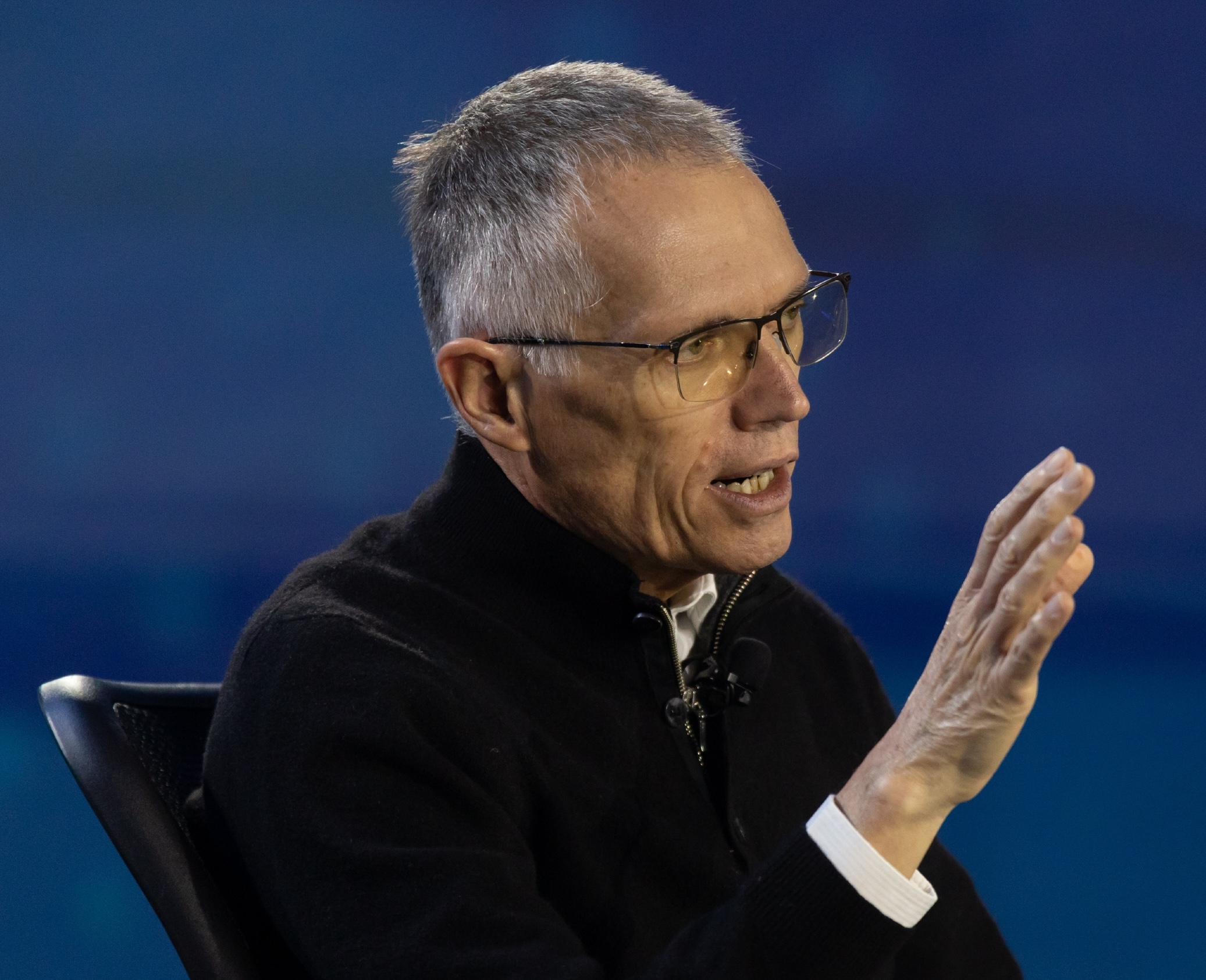

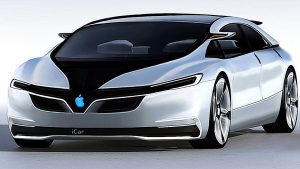

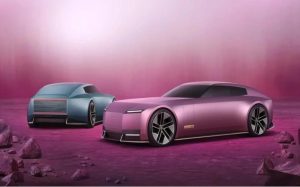
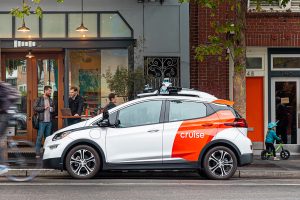


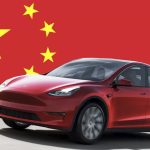
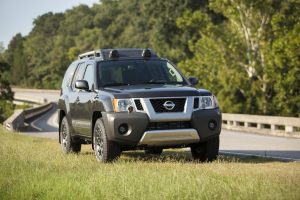
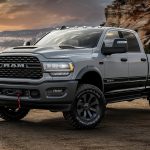
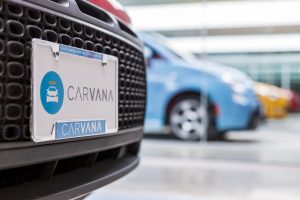
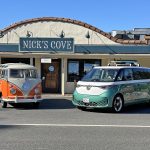

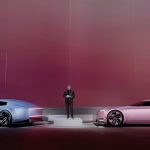
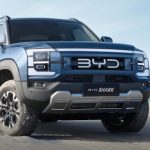
0 Comments